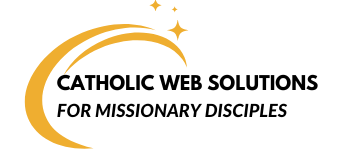Elements of an Engaging Website
 Assuming that a website is easy to navigate, attractive to the eye and has interesting and relevant content (characteristics that should not be assumed-but that is a topic for another post), what other elements make a website engaging?
Assuming that a website is easy to navigate, attractive to the eye and has interesting and relevant content (characteristics that should not be assumed-but that is a topic for another post), what other elements make a website engaging?
As I have mentioned previously, the static, information-based format of websites built in the 1990’s, is no longer the norm by which websites are measured. Today websites have to be “engaging.” They must allow for user-generated content, participation, and relationship building. These activities are possible because of greater bandwidth (speed) and more powerful computers and other devices which allow users to interact with sites (organizations, businesses, communities) easily. Users have come to expect them.
Web 2.0 websites demonstrate the organization’s interest in the visitor, the visitor’s needs, interests and opinions. They can do this in several ways. The most common ways are: blogs, web forms, and connections to social media sites.
1) A blog is a section of the website where fresh content is uploaded regularly and the readers are invited to comment on the content as well as share it with others via social media sites. In order for content to generate comments, it has to be interesting and comment worthy—a challenge to be sure.
2) Using web forms, the organization invites visitors to request additional information or resources, to subscribe to a newsletter or a blog, or register for an event. Web forms are used when an organization has more to share with you if you want it. This feature requires that an organization actually have more to offer i.e. a newsletter, an upcoming event, an interesting blog, flier or brochure or someone who will get back to them.
3) The words “Follow Us” on Facebook, Twitter, YouTube, LinkedIn or other social media sites or their icons alone communicate that an organization has valuable information or insights to share and discuss with its visitors on a regular basis. This means that an organization has insights to share with its publics and is really interested in their feedback.
Just using the three examples above, we see that websites will be engaging when the leaders of the organization, the community, or ministry really want to engage their visitors—want to answer their questions, meet their needs and hear their feedback. When they want to be in relationship with their members, their volunteers, or their visitors and they are willing to work at it, it will happen. Whether they do the work themselves or hire or recruit others to do it, they put a priority on a web presence that is dynamic and interactive. This is very different from what was expected of a website in the 1990s. But we are in the second decade of a new century and expectations have changed. Are we ready to engage?

Comments (3)
Caroline Cerveny, SSJ-TOSF
October 10, 2011 at 10:59 am
Thanks Sr. Susan for these wonderful comments! Well said!
Kristi
October 14, 2011 at 11:35 pm
To be more parish-specific, I can see brave pastors posting their homilies on a blog – or rotating it among ministry leaders / staff. Web forms would be great for registering for the parish or for religious education… possibly also to request sick visitation or prayer requests at the least. What other specific uses would you imagine?
Assessing your parish website : St. Joseph Educational Center
April 30, 2014 at 3:01 pm
[…] Elements of an engaging website, by CatholicWebSolutions […]
Comments are closed